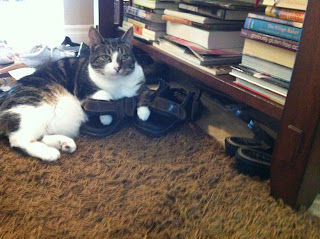I just noticed that “light” is a theme for many of the
Poetry Friday posts. By coincidence, I am sharing a poem about light by William
Butler Yeats.
Aedh Wishes
for the Cloths of Heaven
By William
Butler Yeats
Had I the
heavens' embroidered cloths,
Enwrought with
golden and silver light,
The blue and
the dim and the dark cloths
Of night and
light and the half light,
I would spread
the cloths under your feet:
But I, being
poor, have only my dreams;
I have spread
my dreams under your feet;
Tread softly
because you tread on my dreams.
Perhaps many of you already know and love the poem. But have you heard it set to music? I hadn’t
but was blown away by Mark Sirett’s composition based on Yeat’s poem.
My
daughter’s high school choir performed “Cloths of Heaven” and I’m hoping that
you’ll be able to hear it in the YouTube video I am attempting to embed here. I love how the choir embellishes some of the words by drawing them out
and/or repeating them.
I created a video that shares the sound recording but
displays the poem so that listeners can read along. But you can also click to play it and then scroll up to the top of this post where the poem might be easier to read.
Hope you enjoy it!
Hope you enjoy it!
Check out the Poetry Friday roundup at my juicy little universe.














